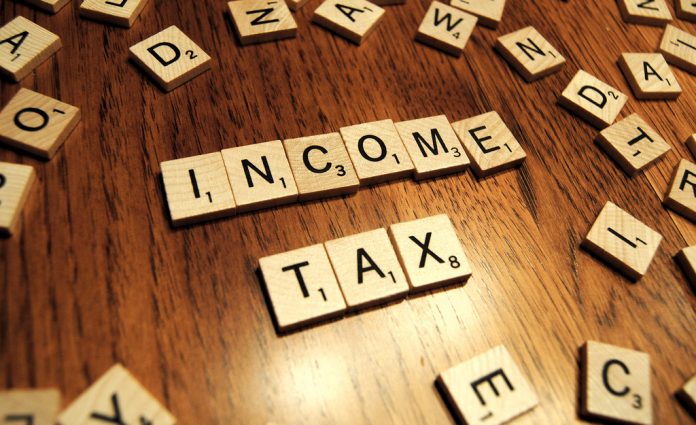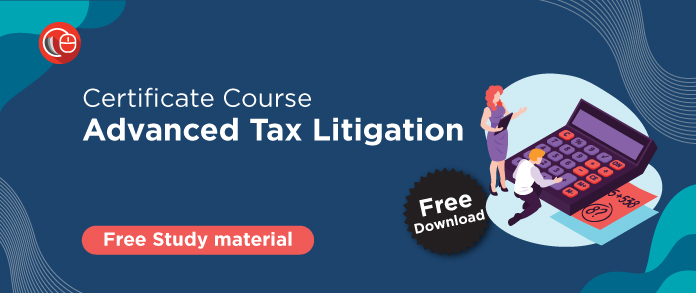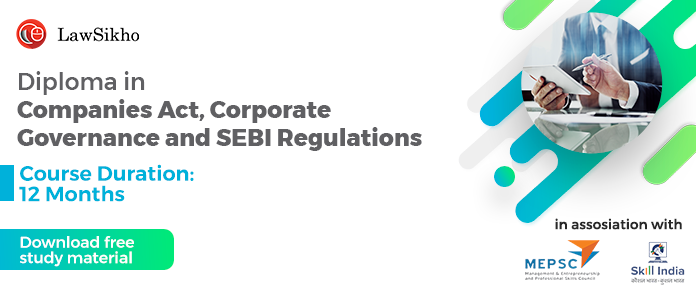This article is written by Monesh Mehndiratta, a law student at Graphic Era Hill University, Dehradun. This article provides a detailed explanation of Section 115BAC of Income Tax Act and other sections related to it.
This article has been published by Sneha Mahawar.
Table of Contents
Introduction
Section 115 bac of Income Tax Act, 1961 has been inserted recently by the Finance Act of 2020. It provides an option to the taxpayers to choose between new tax rates with concessions and actual tax rates without taking into consideration any prescribed exemption or deductions. It also gives clarity to the employees as to whether they should review the new tax regime when withholding the taxes from their salary or not. The Union budget of 2020 introduced this Section. One of the major benefits of this Section is that it provides lower tax rates as compared to old tax regimes and the taxpayer has the option to choose which tax regime he/she wants to follow. It allows the taxpayers to switch between the two schemes.
Applicability of Section 115BAC of Income Tax Act
The Section applies to the following people with effect from Assessment year 2021-22:
- Individuals
- Hindu undivided families including residents and non-residents
Features of Section 115BAC of Income Tax Act
- This Section takes away the deductions that can be availed in the old tax regime.
- The major feature of this Section is that it is optional and a person can still opt for the old tax scheme and switch between the two.
- It does not apply to business income.
- The surcharges and cess rates are the same as old or existing tax schemes.
- If the conditions given under the Section are not fulfilled, the option to choose this scheme will be invalid for that financial year.
Who are eligible as per Section 115BAC of Income Tax Act
The Section provides that the individuals and Hindu families which are undivided can pay the tax as per the Section with a proviso that their income/salary must fulfil the following conditions:
- It should not include any business income.
- It must have been calculated under the provisions of the Act without any kind of deduction or exemption.
- The earlier losses due to any deductions must not be included and must be set off.
- No depreciation should be claimed as per Section 32 of the Act while calculating the salary or income.
- Any exemption related to allowances must not be included.
Exemptions and deductions under Section 115BAC of Income Tax Act
The details of any kind of exemptions or deductions have been given in the Section under the following different categories:
- Salary
In the case of salary, the total income must be calculated without taking any exemption or deduction into consideration under the following provisions of the Act:
- Section 10(5) and Section 10 (13A) i.e. leave travel concessions and house rent allowance respectively.
- Section 10(14) but excluding the following items-
- Allowance which is given to Divyang or physically disabled employees,
- Conveyance allowance,
- Allowance for the travel,
- Daily charges incurred by the employees.
- Section 10(17) allowance for MPs or MLAs.
- Professional tax, standard allowance etc, under Section 16 of the Act.
- Business or profession
The provisions to calculate total income generated from any business or profession are:
- Additional depreciation under Section 32,
- Any kind of investment in new plant or machinery for backward areas under Section 32 AD,
- Development accounts for tea, coffee and rubber under Section 33AB,
- Payments to research associations, universities, laboratories, etc, under Section 35,
- Any investment interconnected with deductions under Section 35 AD,
- Any expenditure on agriculture projects under Section 35CCC,
- Deductions done in family pensions under Section 57,
- Any loss will not be carried forward which has not been set off.
- Minor’s income.
- SEZ units under Section 10AA.
- House property
The provisions to calculate income generated from house property for the purpose of tax are:
- Interest on self-acquired property under Section 24(b) of the Act,
- The loss of income due to house property can be set off,
- 30% deductions and paid municipal taxes are allowed but no interests on capital which has been borrowed.
- Deductions under Chapter IV A
- Contribution by the employer to pension funds under Section 80 CCD,
- Additional employee costs must be deducted as per Section 80 JJAA,
- Deductions in offshore banking units and International Financial Services Centre (IFSC) as per Section 80 LA.
Conditions necessary for Section 115BAC of Income Tax Act
The conditions to be fulfilled in order to opt-in/opt-out of the Section depend upon whether the income has been generated from any business/profession or not. These are:
- No income from any business or profession – In case there is no income from any business or profession, a person can choose this Section before the due date for filing a return has passed.
- Income from business or any profession – In case the income has been generated from a business or profession, he can choose before the return is filed but once he chooses this section, he is bound for a lifetime and the same goes with if he opts out of this Section.
However, an individual choosing to select this Section and has income from the business or profession has to fill FORM 10IE in order to take the benefits of this Section. The individuals whose income is calculated from their salaries need not fill out this form but it is mandatory for those whose income is generated from any business or profession. The form must be duly filled before the due date of return and failure would result in non-availability of the scheme under Section 115 BAC.
Tax rates under Section 115BAC of Income Tax Act
The following table provides the rates on tax as per the Section applicable to different incomes:
| S.No. | Income range | Tax applicable |
| Upto 2,50,000/- | No tax | |
| Rs 2,50,001 – Rs 5,00,000 | 5% | |
| Rs 5,00,001 – Rs 7,50,000 | 10% | |
| Rs 7,50,001 – Rs 10,00,000 | 15% | |
| Rs 10,00,001 – Rs 12,50,000 | 20% | |
| Rs 12,50,001 – Rs 15,00,000 | 25% | |
| Above Rs 15,00,000 | 30% |
These rates are much lower than the old or existing tax rates and a taxpayer has the option to select which scheme he wants to opt for i.e. new tax scheme or old tax scheme. In case he opts for a new tax regime, he has to satisfy all the conditions given under Section 115 BAC of the Income Tax Act, 1961.
Comparison between the old and new tax regime
One major advantage that the old tax regime provided to the taxpayers was a lot of exemptions and deductions which are not available under the new tax regime. On the other hand, the new tax scheme is beneficial for people who either have invested or will invest in the future in EPF, fixed deposits, life insurance, pension schemes etc. Also, the deductions or exemptions do not apply in case the total income of a person is based on salary. The following table shows the comparison between the tax rates of the old tax scheme and the new tax scheme.
| S. No. | Total income | Rate of tax applicable as per new tax regime | Total income | Rate of tax applicable as per old tax regime |
| Upto 2,50,000/- | No tax | Upto 2,50,000/- | No tax | |
| Rs 2,50,001 – Rs 5,00,000 | 5% | Rs 2,50,001 – Rs 5,00,000 | 5% | |
| Rs 5,00,001 – Rs 7,50,000 | 10% | Rs 5,00,001 – Rs 10,00,000 | 20% | |
| Rs 7,50,001 – Rs 10,00,000 | 15% | Rs 10,00,00 and above | 30% | |
| Rs 10,00,001 – Rs 12,50,000 | 20% | |||
| Rs 12,50,001 – Rs 15,00,000 | 25% | |||
| Above Rs 15,00,000 | 30% |
Thus, the above table shows that the new tax regime provides more tax slabs and reduced rates of tax on the income when compared to the old tax regime. Another difference between the two is that the tax slab of Rs 3,00,000 – Rs 3,50,000 which is enjoyed by the senior citizens of the country, cannot be availed by them if they choose a new tax regime.
It can also be observed that the old tax regime is beneficial for those with high income and minimum or no investment whereas the new tax regime is best suited for those who plan to invest or have invested in various investments and have low income. Thus, there is no procedure to decide which option is best for the taxpayer. However, he/she must calculate the tax according to both the options and rules and conditions applicable to each of them and then analyse which option is best for them and provides maximum advantages and whether they should choose a new tax regime or not. But if after choosing an option, a person is not satisfied he/she can switch to another but that might be a little problematic and hectic due to the changed procedure for filing of return.
Clarifications of Section 115BAC of Income Tax Act
When the Section was introduced initially by the Finance Act of 2020, there were certain issues and ambiguities related to various aspects but the major problem was the deduction of tax by the employers. Thus, in order to provide clear, certain and unambiguous provisions to the public the Central Board of Direct Taxes (CBDT) gave clarifications about the Section and issues related to it faced by the people. These are:
- In case an employer wants to deduct TDS for an employee, he has to take a prior declaration by him, where the employee has income other than profits in a business and wants to opt for concessional rate, tells the employer and he upon such declaration will deduct the TDS and compute his income as per Section 115 BAC of the Act.
- If no such declaration is given by the employees, the employer will deduct the TDS as per other provisions and old tax rates of the Act and not according to this Section.
- An employee while giving any declaration must be careful and scrutinise every aspect of it because once the declaration is made, it cannot be changed. It should also be noted that such a declaration is for a particular year previously and cannot be used for further years.
- The employee also has an option to change the scheme of tax he is opting while filing the return. If he is not satisfied with the old tax regime he can opt for a new tax regime and vice-versa. Section 139 of the Act provides that the option can be changed during the filing of a return and can be different from what has been intimated.
When the return of income need not be filed
Section 115G of the Act provides that a non-resident Indian who has income only by way of investment or long-term capital gains which is arising from transfer of foreign exchange, need not file the return of income under Section 139 of the Act if the tax-deductible from such income has been correctly deducted. However, he has another option as per Section 115-I of the Act to submit the return of income and apply for a refund which is due, if any.
Conclusion
It can be concluded that under the old tax regime the income slabs were high but there were many ways people could easily reduce the tax and their liability to pay the taxes. These also helped a lot of people to escape from paying taxes and thus, there was a need for a new tax scheme. The old tax regime provides 70 exemptions and deductions, the advantages of which were availed by the people and they had to pay fewer taxes. However, with the introduction of the new tax regime with the insertion of Section 115 BAC by the Finance Act of 2020, there are fewer and almost no exemptions and deductions but it provides more income slabs with fewer tax rates. Though there are fewer deductions as per the new tax scheme but lower tax rates with more income slabs which mean that is beneficial for those who fall into the category of less income slab and tend to invest more.
There are no such procedures which help a person in deciding which option he should opt. In order to have a clear decision, he must calculate his income as per both the tax schemes and then compute the taxes. After analysing all the benefits and advantages, he should choose between the two options. If he is not satisfied with the option he has chosen, he can easily switch between the two. However, all this seems quite hectic but due to the online filing of returns, the procedure has been made easy and relaxing.
Frequently asked questions (FAQs)
- Under which act Section 115 BAC has been introduced in the Income Tax Act, 1961?
The Section has been inserted recently by the Finance Act of 2020. It provides an option to the taxpayers to choose between new tax rates with concessions and actual tax rates without taking into consideration any prescribed exemption or deductions. It also gives clarity to the employees as to whether they should review the new tax regime when withholding the taxes from their salary or not.
- What are the features of Section 115 BAC?
The features of the Section are:
- This Section takes away the deductions that can be availed in the old tax regime.
- The major feature of this section is that it is optional and a person can still opt for the old tax scheme and switch between the two.
- It does not apply to business income.
- The surcharges and cess rates are the same as old or existing tax schemes.
- If the conditions given under the section are not fulfilled, the option to choose this scheme will be invalid for that financial year.
- What needs to be done in case an employer wants to deduct the TDS of his/her employees?
- In case an employer wants to deduct TDS for an employee, he has to take a prior declaration by him, where the employee has income other than profits in a business and wants to opt for concessional rate, tells the employer and he upon such declaration will deduct the TDS and compute his income as per Section 115 BAC of the Act.
- If no such declaration is given by the employees, the employer will deduct the TDS as per other provisions and old tax rates of the Act and not according to this Section.
- The employee also has an option to change the option while filing the return. Section 139 of the Act provides that the option can be changed during the filing of a return and can be different from what has been intimated.
- What are the necessary conditions of the Section?
The conditions to be fulfilled in order to opt-in/opt-out of the Section depends upon whether the income has been generated from any business or profession or not. These are:
- No income from any business or profession – In case there is no such, a person can choose this Section before the due date for filing a return has passed.
- Income from business or any profession – In case the income has been generated from a business or profession, he can choose before the return is filed but once he chooses this section, he is bound for a lifetime and the same goes with if he opts out of this Section.
References
- https://taxguru.in/income-tax/scheme-taxation-u-s-115bac-income-tax-act-1961.html
- https://www.incometaxindia.gov.in/pages/acts/income-tax-act.aspx?key=2&key=2
- https://www.paisabazaar.com/tax/section-115bac/
- https://www.indiafilings.com/learn/cbdt-clarification-on-section-115-bac-of-income-tax-act/#:~:text=The%20new%20Section%20115BAC%20of,his%2Fher%20return%20of%20income
Students of Lawsikho courses regularly produce writing assignments and work on practical exercises as a part of their coursework and develop themselves in real-life practical skills.
LawSikho has created a telegram group for exchanging legal knowledge, referrals, and various opportunities. You can click on this link and join:
Follow us on Instagram and subscribe to our YouTube channel for more amazing legal content.
 Serato DJ Crack 2025Serato DJ PRO Crack
Serato DJ Crack 2025Serato DJ PRO Crack










 Allow notifications
Allow notifications



